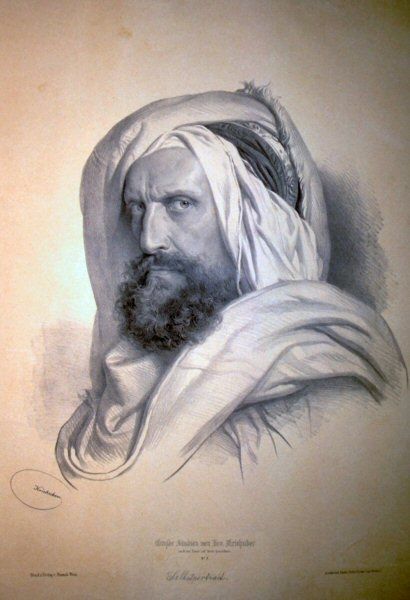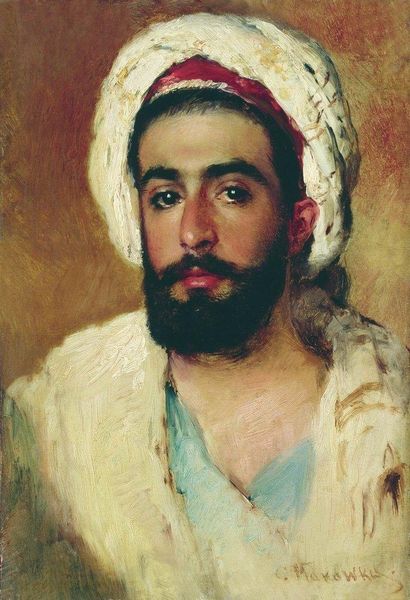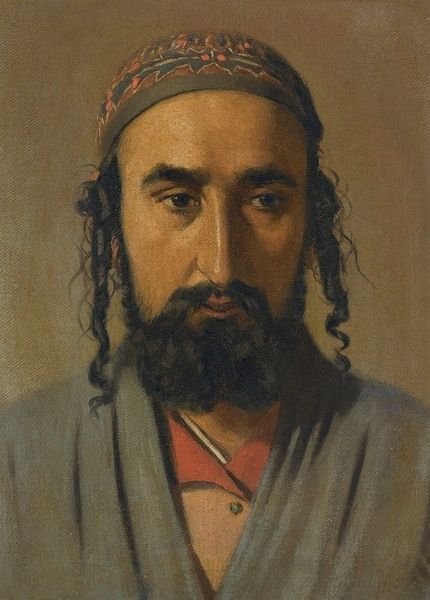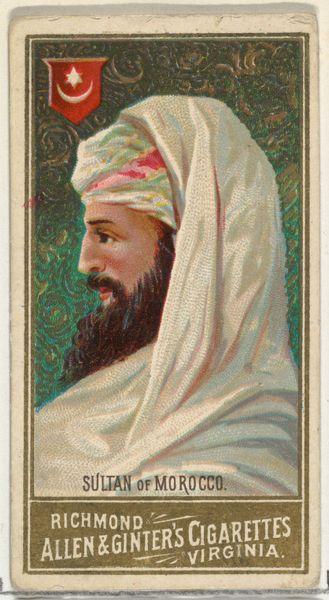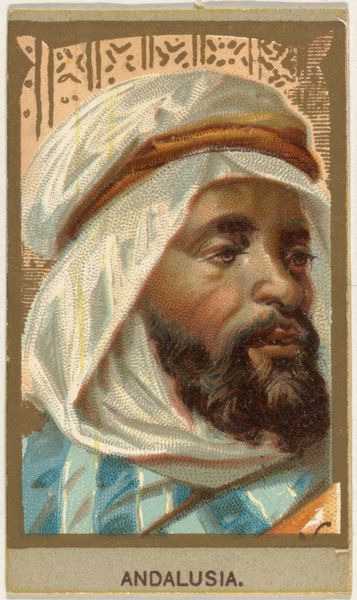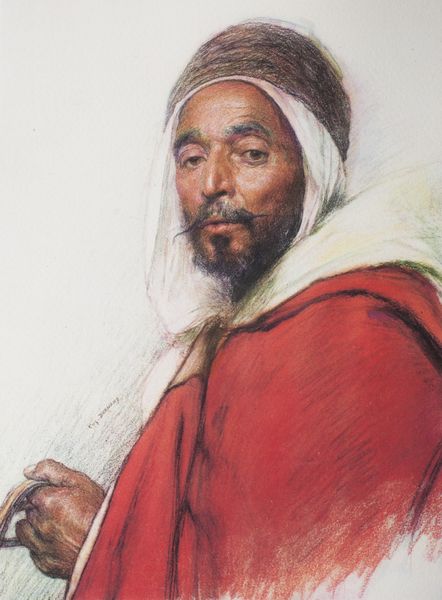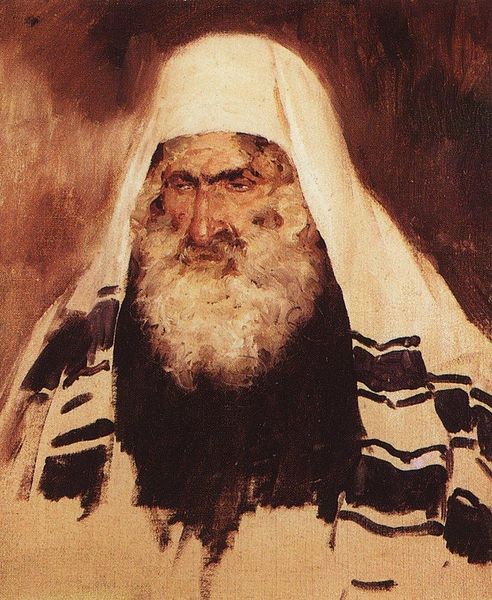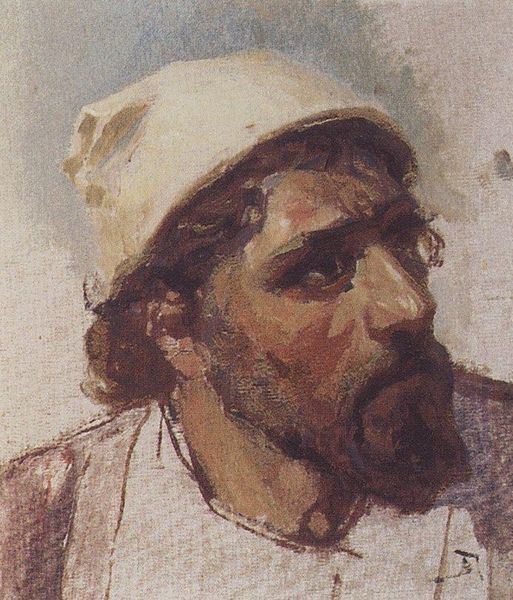
#
charcoal drawing
#
portrait reference
#
portrait head and shoulder
#
animal portrait
#
animal drawing portrait
#
portrait drawing
#
facial portrait
#
portrait art
#
fine art portrait
#
digital portrait
Dimensions: 37 x 26 cm
Copyright: Public domain
Editor: We’re looking at Carl Haag’s rendering of “Hassan Ben Moosa, a bedowee of the Howareen Tribe.” The artwork date isn't listed, but I am immediately drawn to the granular detail in his beard and the texture of his headdress, supposedly achieved via charcoal drawing. What stands out to you when you consider the artist's chosen materials? Curator: Consider the material reality: charcoal. Think about what that signifies, editor. Haag isn’t just representing this Bedouin man; he's engaging in a process rooted in specific colonial conditions. Why charcoal? It's cheap, transportable, readily available – a perfect tool for sketching on the go in a foreign land, an efficient method of documentation that simultaneously evokes exoticism. It’s inherently linked to a rapid method, possibly a study for something larger, perhaps even destined for a more 'noble' material. It's all about means and consumption, isn't it? Editor: That makes sense. It sounds like he's also using the material itself as a storytelling element. Did charcoal sketch portraits of tribesmen such as Hassan circulate back in Europe? Was it for documentation? Curiosity? Curator: Exactly. Charcoal becomes a tool of both artistic creation *and* colonial observation. These portraits served as a commodity themselves; easily reproduced as engravings, disseminated widely, feeding a European hunger for the 'other'. Haag is participating in a system, both economic and representational. The materials used and how the artist would utilize them also reveal hierarchies between different classes involved, between the European artist's vision of the subject and his place in society. Editor: It’s much more involved than just a portrait. Thinking about the journey of the materials and the eventual images puts it into a sharp material and cultural perspective. Thank you! Curator: Indeed, looking at the materials offers a window into production, consumption, and social relations beyond the aesthetic appeal of the artwork itself.
Comments
No comments
Be the first to comment and join the conversation on the ultimate creative platform.
